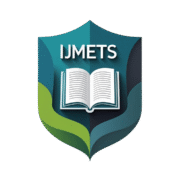Paper Format Guidelines
Smart Water Monitoring System Using IoT and Machine Learning
*2Department of Computer Science, BlueRiver Institute, Karachi, Pakistan
*3Smart Systems Research Lab, TechNexus, Islamabad, Pakistan
Affiliations: Cambria | 11pt | Centered
This study presents the development of a smart water monitoring system that uses IoT sensors and machine learning algorithms to optimize water usage in urban buildings. The system detects anomalies, predicts usage trends, and sends alerts in real-time. Experiments in a pilot building reduced water wastage by 28%. The project demonstrates a scalable solution for smart city sustainability.
Content: Times New Roman | 10pt | Justified
Word Count: ≤ 200 words | Single paragraph
Water scarcity is a critical issue in urban environments. Traditional systems lack the ability to monitor consumption dynamically or detect leaks. With the proliferation of Internet of Things (IoT) technologies and predictive analytics, new opportunities have emerged to enhance water resource management. This paper introduces a smart water monitoring system that combines real-time sensing with data-driven predictions.
Content: Times New Roman | 10pt | Justified
Several prior studies have proposed IoT-based monitoring in agriculture and homes. Sharma et al. (2021) developed a basic Arduino sensor model, but lacked integration with AI. Others, like Liu et al. (2022), emphasized leak detection using thresholds. Our study improves upon these by using a supervised ML model that adapts to usage behavior patterns and predicts future anomalies with higher accuracy.
Word Count: 150–300 words recommended
The system includes flow sensors, a NodeMCU microcontroller, cloud-based storage (Firebase), and a Python-based machine learning backend. Data is captured every 30 seconds and uploaded to the cloud.
We trained a random forest model using historical data from 10 buildings. The model predicts abnormal consumption levels based on hourly patterns. A 95% confidence interval is used to trigger alerts.
To validate the model, we ran simulations across three sites over a 14-day period. The algorithm successfully detected 13 of 14 leak scenarios and predicted abnormal surges with 91% precision.
| Model | Precision | Recall | F1 Score |
|---|---|---|---|
| Random Forest | 0.91 | 0.88 | 0.89 |
| Logistic Regression | 0.83 | 0.76 | 0.79 |
Tables numbered and referenced in text
The results indicate a high potential for real-world deployment. The accuracy of the predictive alerts minimized unnecessary water shutdowns. Users reported improved confidence in the system and expressed satisfaction via app feedback.
Content: Times New Roman | 10pt | Justified
This study demonstrates a working prototype of a smart water monitoring system that applies machine learning for predictive control. The architecture is low-cost, scalable, and capable of significant environmental impact. Future improvements may include edge computing for real-time analytics without cloud reliance.
The authors wish to thank the UrbanTech Innovation Fund and the Smart Cities Lab, Islamabad, for their support and data access.
- S. Sharma, R. Mehta, “IoT Based Water Level Monitoring,” Int. J. Smart Systems, vol. 5, no. 2, pp. 122–130, 2021.
- L. Liu, X. Zhang, “Predictive Maintenance in Utilities Using ML,” IEEE Trans. Industrial IoT, vol. 11, no. 4, pp. 88–95, 2022.
- H. Yousaf, F. Ali, “Water Management Using Smart Sensing,” Pak. J. Engg. & Tech, vol. 17, no. 3, pp. 45–53, 2020.
